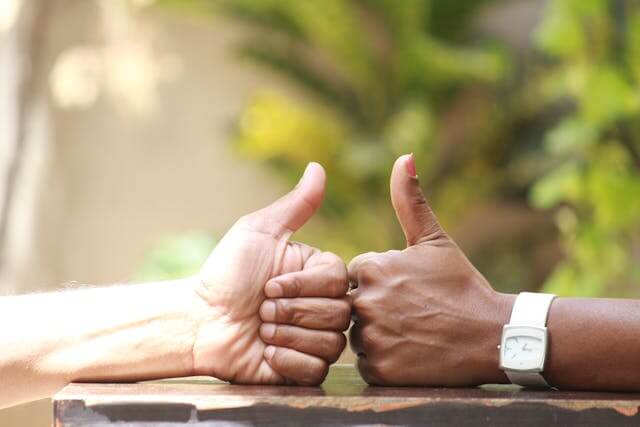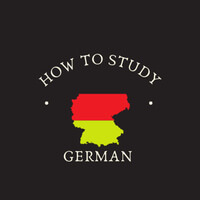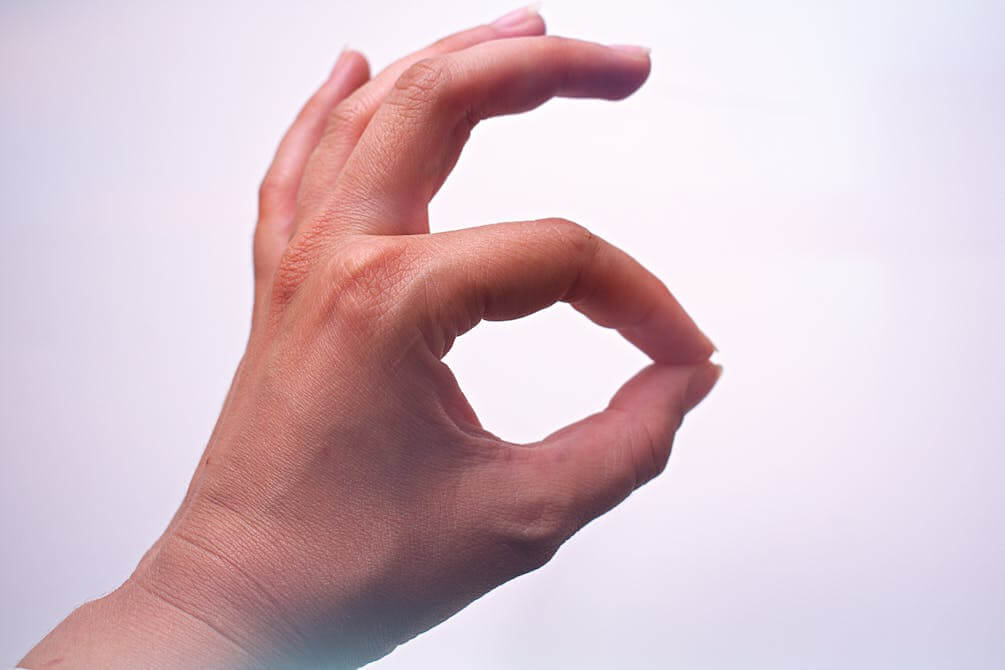Table of Contents
German Body Language Word List
- die Augenbraue (the eyebrow)
- das Augenrollen (the eye rolling)
- die Faust (the fist)
- die Fingerbewegung (the finger movement)
- die Geste (the gesture)
- die Grimasse (the grimace)
- das Händeschütteln (the handshake)
- die Handbewegung (the hand movement)
- die Körperhaltung (the posture)
- das Kopfnicken (the nodding)
- das Kopfschütteln (the head shaking)
- die Mimik (the facial expression)
- das Schmunzeln (the smirk)
- das Schulterzucken (the shrug)
- das Stirnrunzeln (the frown)
- die Unruhe (the restlessness)
- das Winken (the waving)
- die verschränkten Arme (the crossed arms)
- das Wegschauen (the looking away)
- die Zappeligkeit (the fidgetiness)

Body Language Examples in Context
| German Word | German Sentence | English Translation |
|---|---|---|
| die Augenbraue | Er hob die Augenbraue skeptisch. | He raised his eyebrow skeptically. |
| das Augenrollen | Sie reagierte mit einem genervten Augenrollen. | She reacted with an annoyed eye roll. |
| die Faust | Er ballte wütend die Faust. | He clenched his fist angrily. |
| die Fingerbewegung | Mit einer Fingerbewegung rief er den Kellner. | With a finger movement, he called the waiter. |
| die Geste | Seine Geste zeigte seine Unsicherheit. | His gesture showed his insecurity. |
| die Grimasse | Sie zog eine Grimasse, um ihre Abneigung zu zeigen. | She made a grimace to show her dislike. |
| das Händeschütteln | Ein festes Händeschütteln hinterlässt einen guten Eindruck. | A firm handshake leaves a good impression. |
| die Handbewegung | Seine Handbewegung signalisierte Eile. | His hand movement signaled urgency. |
| die Körperhaltung | Die richtige Körperhaltung ist wichtig für ein sicheres Auftreten. | Good posture is important for confident presence. |
| das Kopfnicken | Mit einem Kopfnicken bestätigte sie seine Aussage. | She confirmed his statement with a nod. |
| das Kopfschütteln | Sein Kopfschütteln zeigte Ablehnung. | His head shaking showed disapproval. |
| die Mimik | Ihre Mimik verriet ihre Freude. | Her facial expression revealed her joy. |
| das Schmunzeln | Ein leichtes Schmunzeln erschien auf seinem Gesicht. | A slight smirk appeared on his face. |
| das Schulterzucken | Sein Schulterzucken zeigte seine Unsicherheit. | His shrug showed his uncertainty. |
| das Stirnrunzeln | Sein Stirnrunzeln deutete auf Verwirrung hin. | His frown indicated confusion. |
| die Unruhe | Seine Unruhe war an seinem Zappeln erkennbar. | His restlessness was noticeable in his fidgeting. |
| das Winken | Sie verabschiedete sich mit einem freundlichen Winken. | She said goodbye with a friendly wave. |
| die verschränkten Arme | Er stand mit verschränkten Armen da. | He stood there with crossed arms. |
| das Wegschauen | Er versuchte, das unangenehme Thema durch Wegschauen zu vermeiden. | He tried to avoid the uncomfortable topic by looking away. |
| die Zappeligkeit | Die Zappeligkeit des Kindes fiel sofort auf. | The child’s fidgetiness was immediately noticeable. |
Conclusion
Expanding your vocabulary related to body language not only helps with your German fluency but also enhances your understanding of cultural nuances. Practice these terms regularly, and apply them in your conversations to boost your confidence and clarity in communication.FAQ
Why should I learn German body language vocabulary?
Learning body language terms in German helps you recognize and describe nonverbal communication. Gestures, facial expressions, and posture often express emotions and intentions. Understanding these cues improves your listening, speaking, and intercultural communication skills.
Is this vocabulary useful in real conversations?
Yes. Native speakers often refer to body language in everyday speech. Phrases like Er hat nur mit den Schultern gezuckt (He just shrugged) or Sie hat weggeguckt (She looked away) are common. Knowing these words helps you describe what people do — not just what they say.
What level is this vocabulary for?
This vocabulary is ideal for learners at B1 to B2 level.
Where can I find more vocabulary practice?
Explore our German vocabulary articles and test yourself with our German vocabulary quizzes. Each topic includes lists, examples, and practice tools.
Are example sentences included?
Yes. Each word in this guide includes a full sentence in German with an English translation. These examples show how native speakers use body language terms in real conversations.
What are the most useful body language words to learn first?
Start with common gestures and reactions such as:
-
das Kopfnicken (the nodding)
-
das Kopfschütteln (the head shaking)
-
das Schulterzucken (the shrug)
-
die Mimik (the facial expression)
-
die Geste (the gesture)
These are often used in daily life and are easy to understand and apply.

